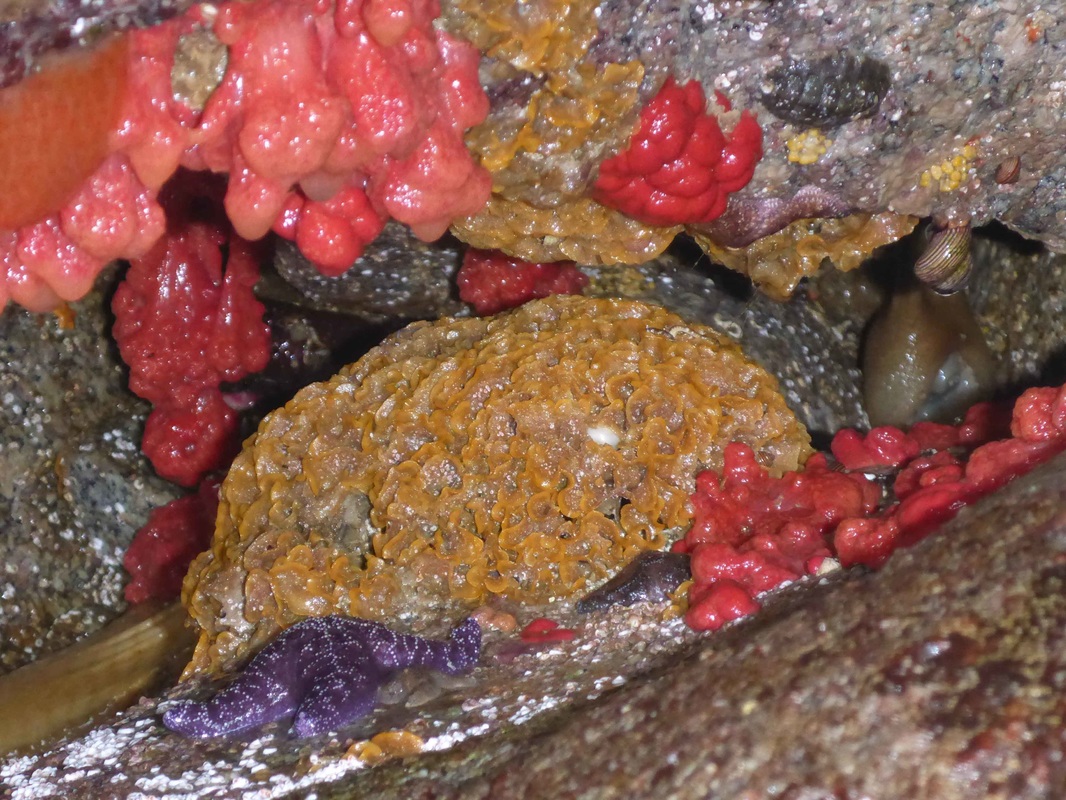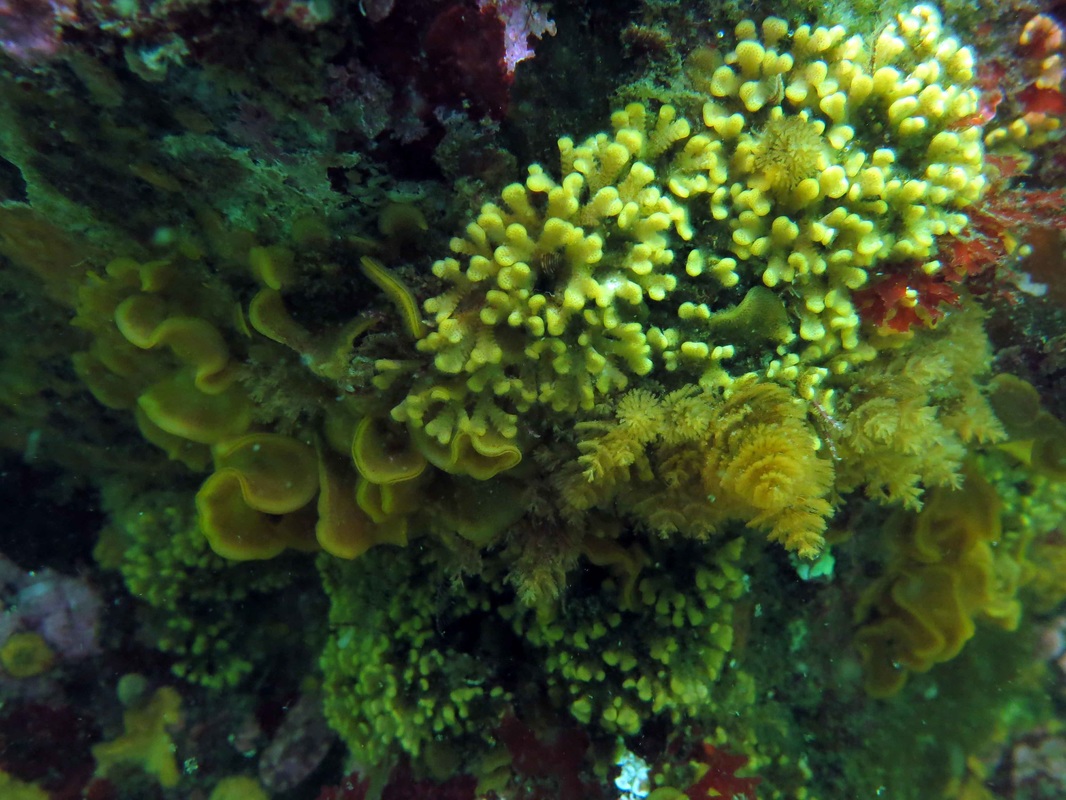Fluted bryozoan, sculptured bryozoan • Hippodiplosia insculpta
{Hippodiplosia = double horse; insculpta = carved}
Left: a large colony of the fluted bryozoan, growing amongst the red soft coral Gersemia rubiformis. Photo by Sara Wickham. Right: the fluted bryozoan is visible at left and bottom right . Also pictured here are Bugula californica (orangey-brown cone-shaped spirals) and Heteropra pacifica (yellowish lobed bryozoan). Photo by Jenn Burt.
Identification
This bryozoan has an upright (not encrusting) sheet-like growth form, with flattened but wavy leaf-like projections. It may form double sheets. While established colonies are curved and wavy, reminiscent of stacks of potato chips, younger growths tend to be flatter. It is a dark yellow to yellow-brown or orange in colour, often with visibly lighter edges. These edges are the growing margins, while the darker interior areas are older. Colonies of this bryozoan grow to 15 cm across.
Habitat & Range
The fluted bryozoan grows on a variety of substrates: hard surfaces, like rock, shells, and pilings, but also on algae, hydroids, and other bryozoans. Its range extends from Alaska to northern Mexico, as well as Costa Rica.
Intriguing Info
This bryozoan is eaten by the channeled topsnail (Calliostoma canaliculatum).
iNaturalist
https://www.inaturalist.org/taxa/429861-Primavelans-insculpta
This bryozoan has an upright (not encrusting) sheet-like growth form, with flattened but wavy leaf-like projections. It may form double sheets. While established colonies are curved and wavy, reminiscent of stacks of potato chips, younger growths tend to be flatter. It is a dark yellow to yellow-brown or orange in colour, often with visibly lighter edges. These edges are the growing margins, while the darker interior areas are older. Colonies of this bryozoan grow to 15 cm across.
Habitat & Range
The fluted bryozoan grows on a variety of substrates: hard surfaces, like rock, shells, and pilings, but also on algae, hydroids, and other bryozoans. Its range extends from Alaska to northern Mexico, as well as Costa Rica.
Intriguing Info
This bryozoan is eaten by the channeled topsnail (Calliostoma canaliculatum).
iNaturalist
https://www.inaturalist.org/taxa/429861-Primavelans-insculpta
References
Cowles, D. (2009). Hippodiplosia insculpta (Hincks, 1882). Invertebrates of the Salish Sea. Rosario Beach Marine Laboratory. Accessed 13/10/2015.
Lamb, A., and Hanby, B. (2005). Marine Life of the Pacific Northwest [electronic version]. Madeira Park, BC: Harbour Publishing.
Authors and editors of page
Kelly Fretwell (2015).
Cowles, D. (2009). Hippodiplosia insculpta (Hincks, 1882). Invertebrates of the Salish Sea. Rosario Beach Marine Laboratory. Accessed 13/10/2015.
Lamb, A., and Hanby, B. (2005). Marine Life of the Pacific Northwest [electronic version]. Madeira Park, BC: Harbour Publishing.
Authors and editors of page
Kelly Fretwell (2015).






